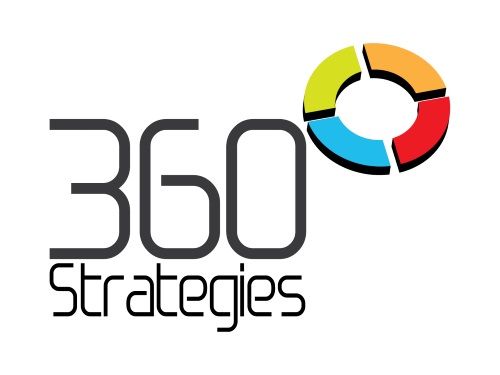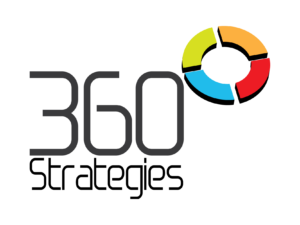In the ever-evolving landscape of business, channel development stands as a cornerstone for achieving sustainable growth and market penetration. I have come to realize that effective channel development is not merely about selling products or services; it encompasses the entire ecosystem of how those offerings reach the end consumer. By establishing a robust channel strategy, I can ensure that my products are accessible to a wider audience, ultimately driving sales and enhancing brand visibility.
The right channels can amplify my marketing efforts, allowing me to tap into new customer segments and geographical markets that I may not have reached otherwise. Moreover, channel development fosters collaboration and synergy between various stakeholders. I have learned that by engaging with distributors, retailers, and other partners, I can create a network that not only supports my business objectives but also enhances the overall customer experience.
This interconnectedness can lead to shared insights and resources, enabling me to respond more effectively to market demands. In essence, channel development is about building a framework that supports my business’s long-term vision while adapting to the dynamic nature of consumer behavior and industry trends.
Key Takeaways
- Channel development is crucial for expanding market reach and increasing sales opportunities
- Choosing the right channels for your business involves understanding your target audience and their preferred purchasing methods
- Building strong relationships with channel partners is essential for long-term success and mutual benefit
- Effective channel development strategies require clear communication, training, and support for partners
- Leveraging technology can streamline channel management, improve communication, and provide valuable data for decision-making
Identifying the Right Channels for Your Business
Identifying the right channels for my business is a critical step in the channel development process. I have found that this requires a deep understanding of my target audience and their purchasing behaviors. By conducting thorough market research, I can pinpoint where my potential customers are most likely to engage with my products or services.
This could range from traditional retail outlets to online platforms or even direct sales models. Each channel presents unique opportunities and challenges, and it is essential for me to evaluate them based on factors such as cost, reach, and alignment with my brand values. Additionally, I must consider the competitive landscape when selecting channels.
Observing how competitors position themselves in various markets can provide valuable insights into potential gaps or opportunities. I have learned that leveraging both qualitative and quantitative data can help me make informed decisions about which channels to pursue. For instance, if I discover that a significant portion of my target demographic prefers shopping online, it would be prudent for me to invest in e-commerce platforms and digital marketing strategies.
Ultimately, the goal is to create a multi-channel approach that maximizes my reach while ensuring a consistent brand message across all touchpoints.
Building Strong Relationships with Channel Partners

Building strong relationships with channel partners is paramount to the success of my channel development efforts. I have come to understand that these partnerships are not just transactional; they require ongoing communication, trust, and mutual benefit. Establishing rapport with my partners allows me to foster an environment where collaboration thrives.
Regular check-ins and open lines of communication enable me to address any concerns promptly and adapt our strategies as needed. Furthermore, I recognize the importance of providing value to my channel partners. This could involve offering training sessions, marketing support, or exclusive promotions that empower them to sell my products more effectively.
By investing in their success, I create a sense of loyalty and commitment that can lead to long-term partnerships. I have seen firsthand how strong relationships can translate into increased sales and market share, as partners become advocates for my brand within their networks.
Implementing Effective Channel Development Strategies
| Channel Development Strategy | Metrics |
|---|---|
| Market Analysis | Market share, customer segments, competitive landscape |
| Channel Partner Selection | Number of potential partners, partner capabilities, alignment with company goals |
| Channel Training and Support | Training completion rates, partner satisfaction, support ticket resolution time |
| Channel Performance Evaluation | Sales revenue, customer satisfaction, partner feedback |
| Channel Expansion | New partner acquisition, geographic coverage, product line expansion |
Implementing effective channel development strategies requires a well-thought-out plan that aligns with my overall business objectives. I have learned that setting clear goals is essential for guiding my efforts and measuring success. Whether it’s increasing market share, expanding into new territories, or enhancing customer engagement, having specific targets allows me to focus my resources effectively.
Moreover, I must remain flexible in my approach. The business environment is constantly changing, and what works today may not be as effective tomorrow. I have found that regularly reviewing and adjusting my strategies based on performance metrics and market feedback is crucial.
This iterative process enables me to stay ahead of trends and respond proactively to shifts in consumer preferences or competitive dynamics. By fostering a culture of continuous improvement within my team, I can ensure that our channel development efforts remain relevant and impactful.
Leveraging Technology for Channel Development
In today’s digital age, leveraging technology for channel development has become indispensable. I have discovered that various tools and platforms can streamline processes, enhance communication, and provide valuable insights into channel performance. For instance, utilizing Customer Relationship Management (CRM) systems allows me to track interactions with partners and customers, ensuring that I maintain strong relationships while also identifying opportunities for growth.
Additionally, technology enables me to analyze data more effectively. By employing analytics tools, I can gain insights into customer behavior across different channels, helping me make informed decisions about where to allocate resources. Social media platforms also play a significant role in channel development; they allow me to engage directly with consumers and gather feedback in real time.
Embracing these technological advancements not only enhances my operational efficiency but also positions my business as an innovative player in the market.
Measuring and Evaluating Channel Performance

Identifying Valuable Metrics
Metrics such as sales volume, customer acquisition costs, and partner engagement levels provide valuable insights into channel performance. These metrics help to identify which channels are performing well and which ones require adjustments.
Data-Driven Decision Making
Regularly reviewing these metrics enables data-driven decisions about resource allocation and adjustments. For instance, if a particular channel is underperforming, it’s essential to investigate the reasons behind it, such as lack of marketing support or insufficient partner training.
Proactive Evaluation for Alignment
By proactively evaluating channel performance, channel development efforts can remain aligned with overall business goals. This approach ensures that resources are invested in the most effective channels, ultimately driving business growth and success.
Adapting and Evolving Channel Development Strategies
The ability to adapt and evolve my channel development strategies is crucial in today’s fast-paced business environment. I have come to understand that flexibility is key; what worked yesterday may not be effective tomorrow due to changing consumer preferences or emerging technologies. Therefore, I must remain vigilant and open to new ideas and approaches.
I have found that fostering a culture of innovation within my team encourages creative thinking and problem-solving. Regular brainstorming sessions allow us to explore new channels or tactics that could enhance our reach and effectiveness. Additionally, staying informed about industry trends and competitor activities helps me anticipate changes in the market landscape.
By being proactive rather than reactive, I can position my business for long-term success in an ever-evolving marketplace.
Overcoming Challenges in Channel Development
Despite the numerous benefits of channel development, I have encountered various challenges along the way. One significant hurdle has been managing conflicts between different channel partners. Competing interests can sometimes lead to friction, which can undermine collaboration efforts.
To address this issue, I have learned the importance of clear communication and setting expectations from the outset. Establishing guidelines for cooperation helps mitigate potential conflicts and fosters a more harmonious working relationship. Another challenge has been adapting to technological advancements that continuously reshape the way businesses operate.
Keeping up with new tools and platforms can be overwhelming at times; however, I have realized that embracing change is essential for staying competitive. Investing in training for myself and my team ensures that we are equipped with the skills needed to leverage new technologies effectively. By viewing challenges as opportunities for growth rather than obstacles, I can navigate the complexities of channel development with confidence.
In conclusion, channel development is a multifaceted process that requires careful planning, execution, and ongoing evaluation. By understanding its importance, identifying the right channels, building strong relationships with partners, implementing effective strategies, leveraging technology, measuring performance, adapting approaches, and overcoming challenges, I can create a robust framework for success in today’s dynamic business environment. As I continue on this journey, I remain committed to refining my channel development efforts to drive growth and deliver exceptional value to my customers and partners alike.



